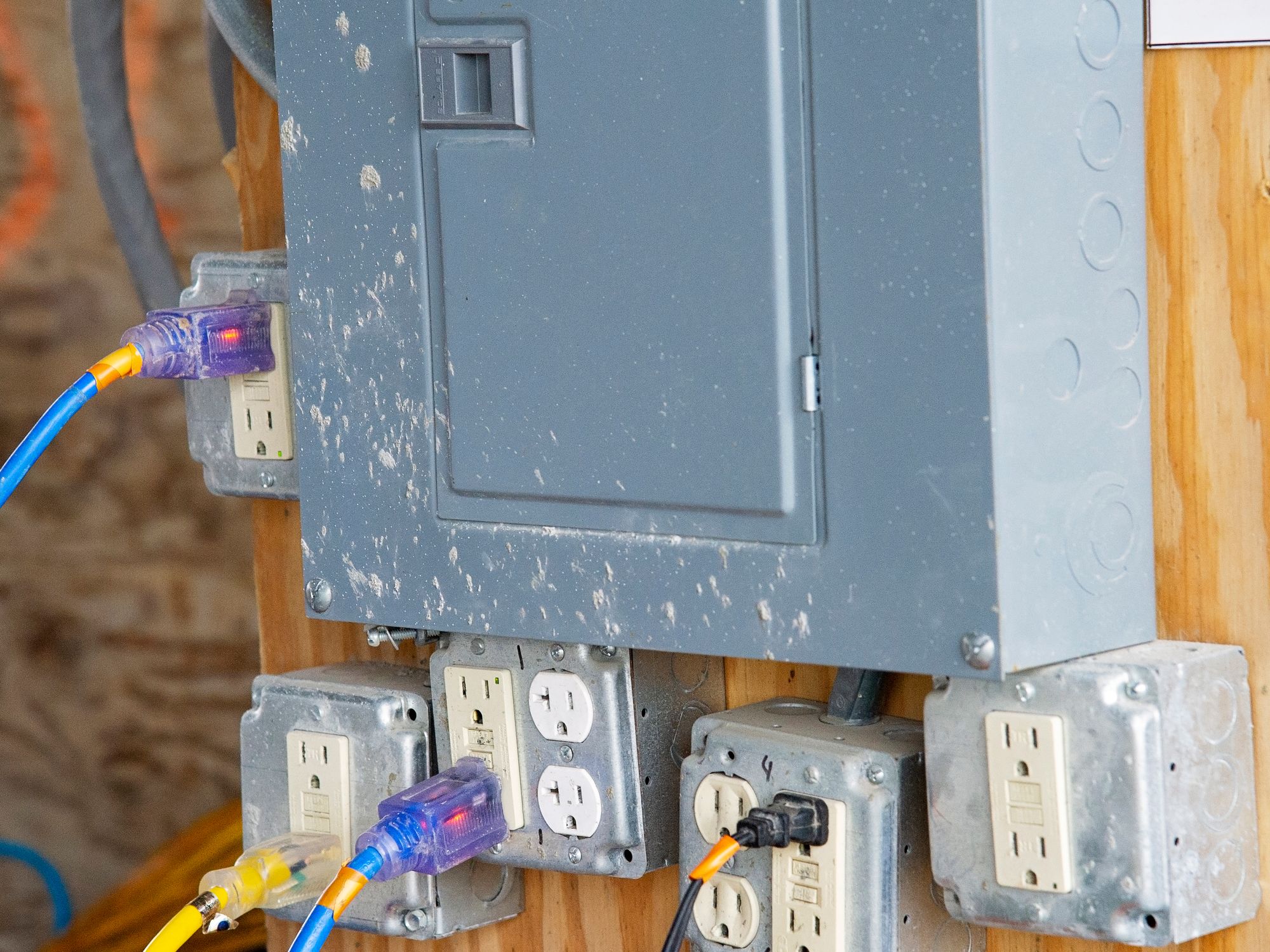Installation safety requirements

- Electrical equipment must be approved, free from hazards, guarded when needed, and protected from overcurrent.
This applies to installations, both temporary and permanent, used on the jobsite; but they do not apply to existing permanent installations that were in place before the construction activity commenced.
Approved electrical conductors and equipment
The electrical conductors and equipment used by the employer must be approved.
Approved in the construction regulations (1926 Subpart K) means acceptable to the authority enforcing this Subpart. The authority enforcing this Subpart is the Assistant Secretary of Labor for Occupational Safety and Health.
What is required for examination, installation, and use of equipment?
The employer must ensure that electrical equipment is free from recognized hazards that are likely to cause death or serious physical harm to employees. Safety of equipment must be determined by:
- Suitability for installation and use in conformity with the provisions of the standard. Suitability of equipment for an identified purpose may be evidenced by listing, labeling, or certification for that identified purpose.
- Mechanical strength and durability, including, for parts designed to enclose and protect other equipment, the adequacy of the protection provided.
- Electrical insulation.
- Heating effects under conditions of use.
- Arcing effects.
- Classification by type, size, voltage, current capacity, and specific use.
- Other factors which contribute to the practical safeguarding of employees who use or are likely to come in contact with the equipment.
What types of guarding are required?
Live parts of electric equipment operating at 50 volts or more must be guarded against accidental contact. Guarding of live parts must be accomplished by any of the following means:
- Location in a cabinet, room, vault, or similar enclosure accessible only to qualified persons.
- Use of permanent, substantial partitions or screens to exclude unqualified persons.
- Location on a suitable balcony, gallery, or platform elevated and arranged to exclude unqualified persons.
- Elevation of 8 feet or more above the floor.
Entrance to rooms and other guarded locations containing exposed live parts must be marked with conspicuous warning signs forbidding unqualified persons to enter. Electric installations that are over 600 volts and that are open to unqualified persons must be made with metal-enclosed equipment or enclosed in a vault or area controlled by a lock. In addition, equipment must be marked with appropriate caution signs.
What is overcurrent protection?
The following requirements apply to overcurrent protection of circuits rated 600 volts, nominal, or less:
- Conductors and equipment must be protected from overcurrent in accordance with their ability to safely conduct current and the conductors must have sufficient current carrying capacity to carry the load.
- Overcurrent devices must not interrupt the continuity of the grounded conductor unless all conductors of the circuit are opened simultaneously, except for motor-running overload protection.
- Overcurrent devices must be readily accessible and not located where they could create an employee safety hazard by being exposed to physical damage or located in the vicinity of easily ignitable material.
- Fuses and circuit breakers must be so located or shielded that employees will not be burned or otherwise injured by their operation.
When should equipment connected by cord and plug be grounded?
Exposed noncurrent-carrying metal parts of cord- and plug-connected equipment which may become energized must be grounded if the equipment is:
- In a hazardous (classified) location.
- Operated at over 150 volts to ground, except for guarded motors and metal frames of electrically heated appliances if the appliance frames are permanently and effectively insulated from ground.
- One of the types listed below (Item 6 lists an exemption):
- Handheld motor-operated tools.
- Cord- and plug-connected equipment used in damp or wet locations or by employees standing on the ground or on metal floors or working inside metal tanks or boilers.
- Portable and mobile x-ray and associated equipment.
- Tools likely to be used in wet and/or conductive locations.
- Portable hand lamps.
- (Exemption) Tools likely to be used in wet and/or conductive locations need not be grounded if supplied through an isolating transformer with an ungrounded secondary of not over 50 volts. Listed or labeled portable tools and appliances protected by a system of double insulation, or its equivalent, need not be grounded. If such a system is employed, the equipment must be distinctively marked to indicate that the tool or appliance uses a system of double insulation.
